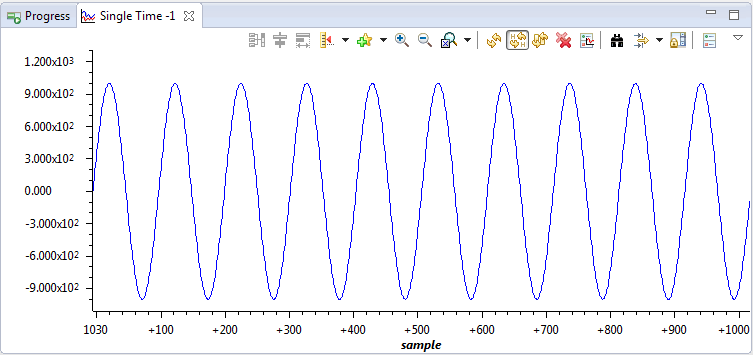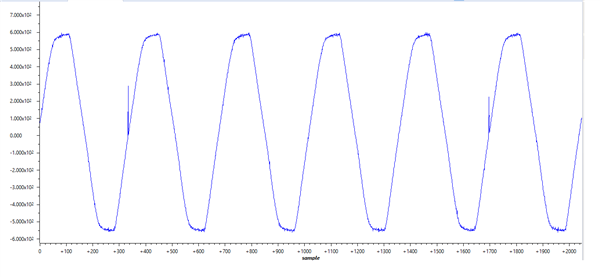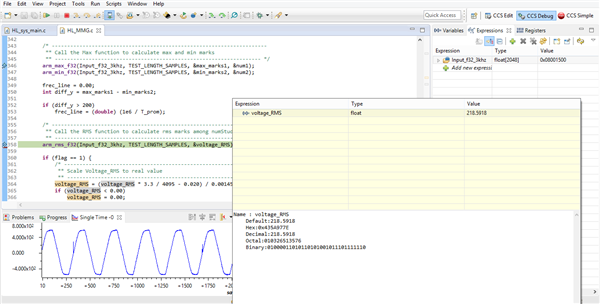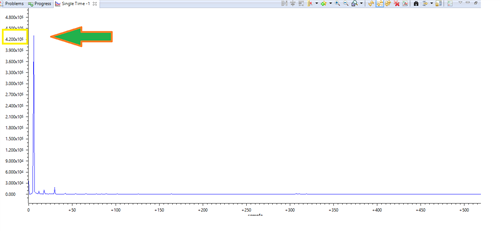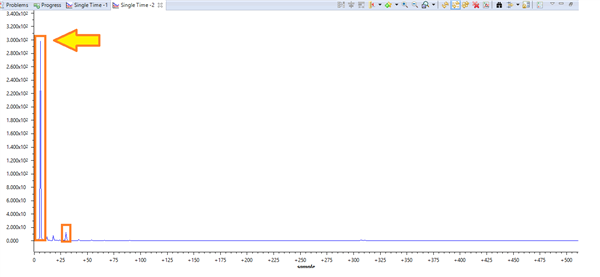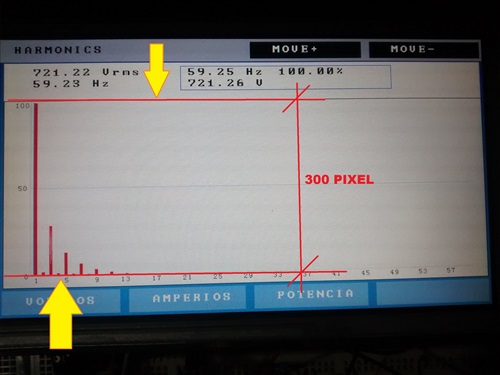Hi,
I'm starting to test/study the CMSIS lib in the Stellaris/Tiva. Using the paper "Using the CMSIS DSP Library in Code Composer Studio™ for TM4C MCUs", I got build the library and it works fine. The examples return the expected state.
Now I trying to use the cFFT in a signal. To the test I created a pure sine wave in an array of 1024 samples (amplitude of 1000 and 10 cycles), as in the image.
After the processing the indexer return the correct harmonic (10th), but I don't understand the result of the magnitude. The magnitude of the 10th hamonic is 727.98. How it relates to the amplitude of the harmonic?
This is the principal part of code:
#define N_points 1024 ... uint32_t ifftFlag = 1; uint32_t doBitReverse = 1; /* Process the data through the CFFT/CIFFT module */ arm_cfft_f32(&arm_cfft_sR_f32_len512, wave_float, ifftFlag, doBitReverse); /* Process the data through the Complex Magnitude Module for calculating the magnitude at each bin */ arm_cmplx_mag_f32(wave_float, wave_out, N_points/2); /* Calculates maxValue and returns corresponding BIN value */ arm_max_f32(wave_out, N_points/2, &maxValue, &testIndex);
Thanks.


